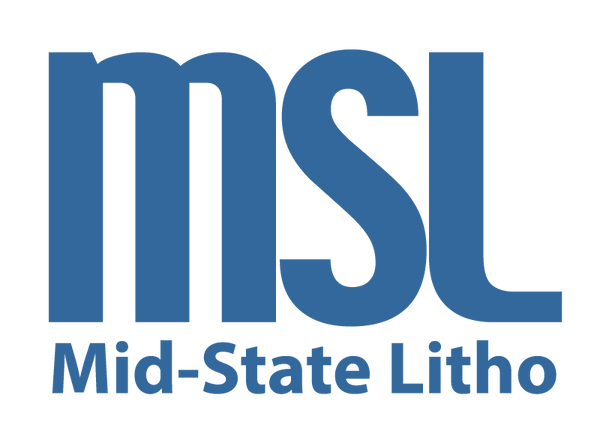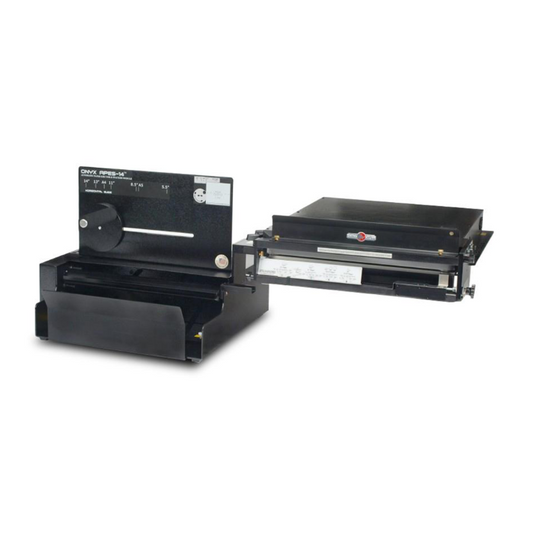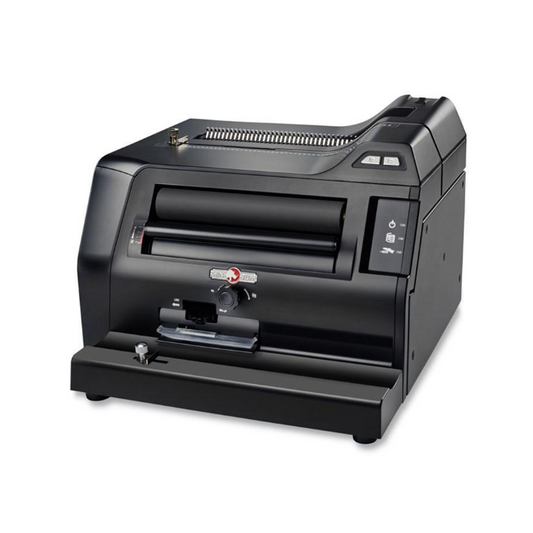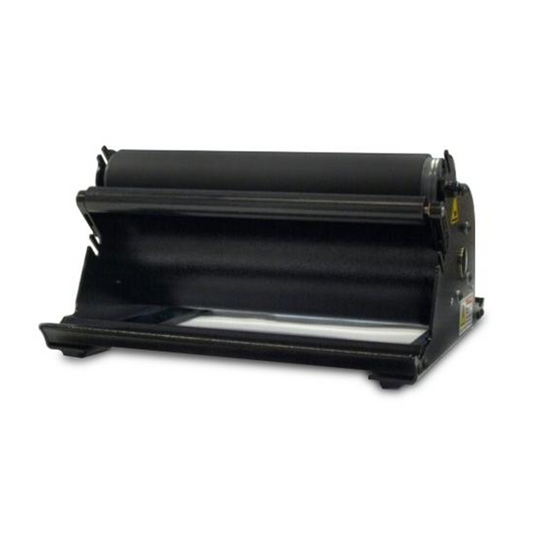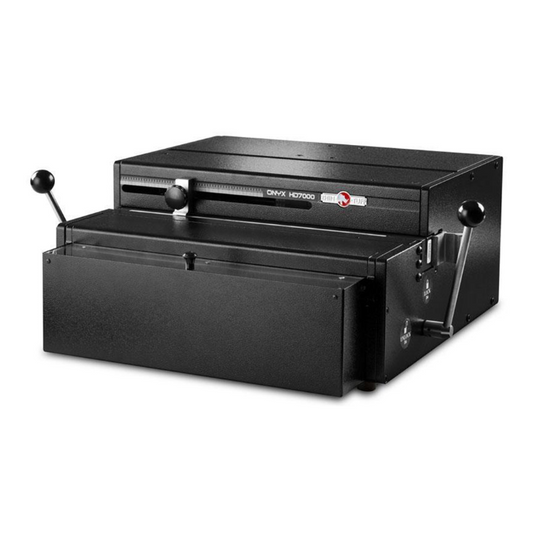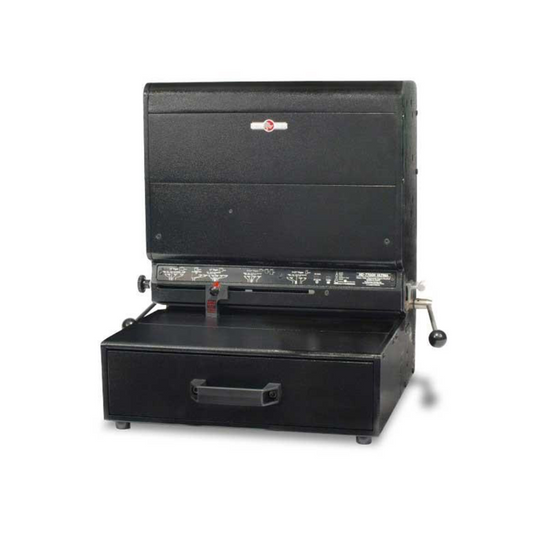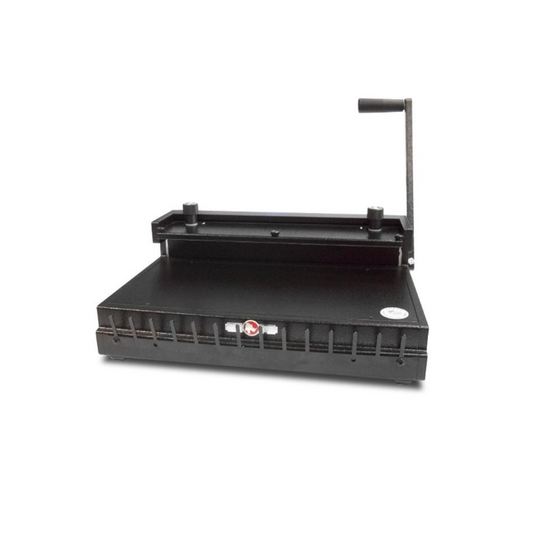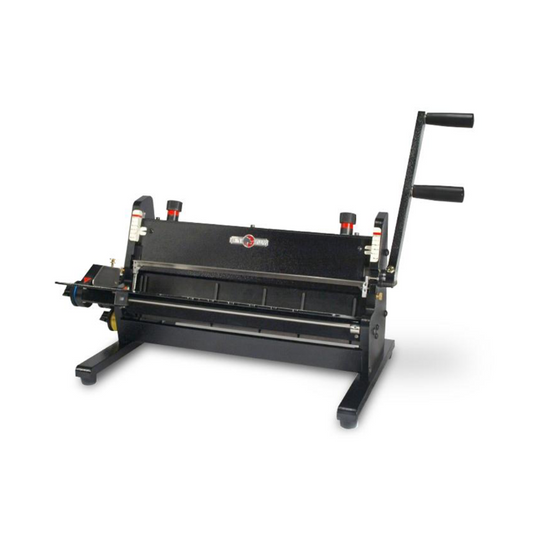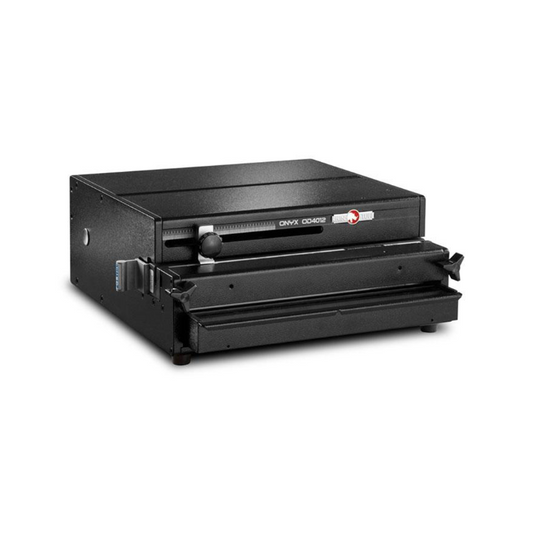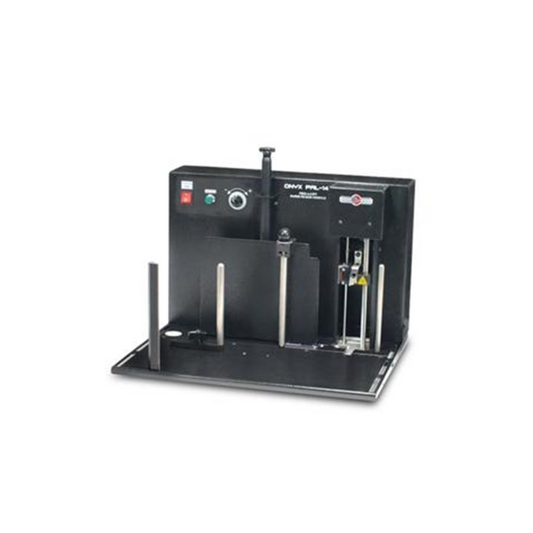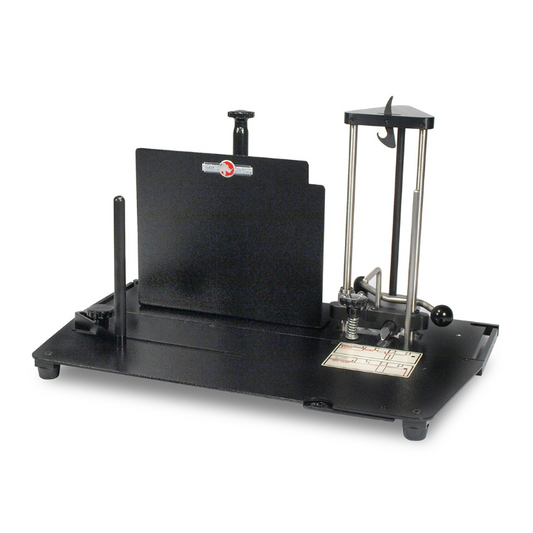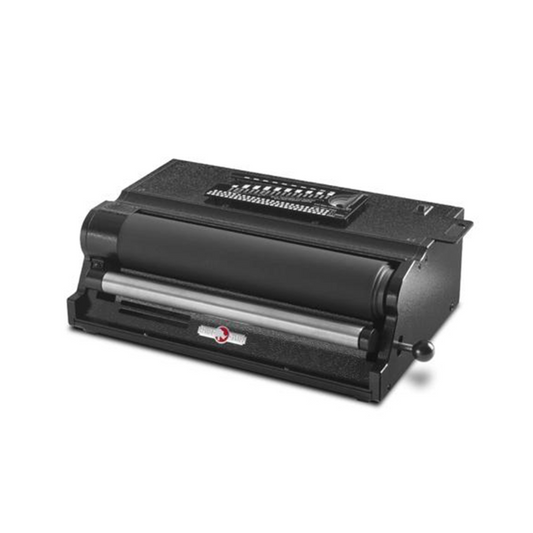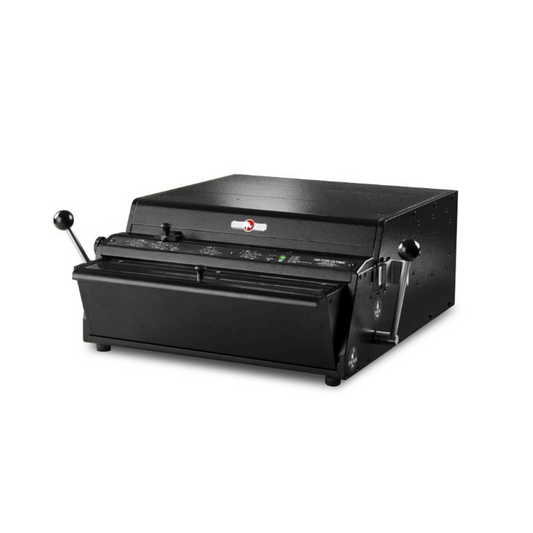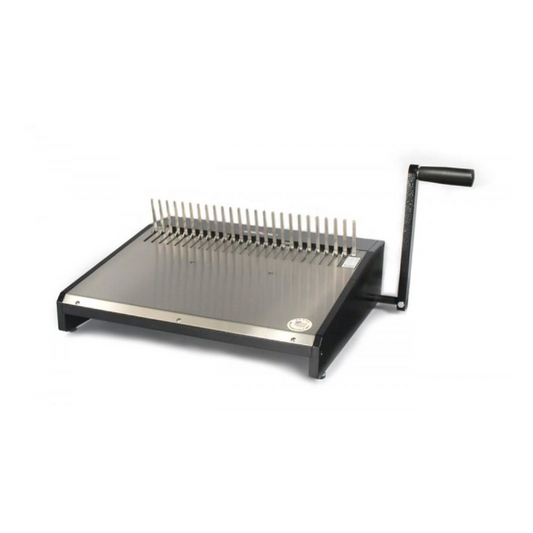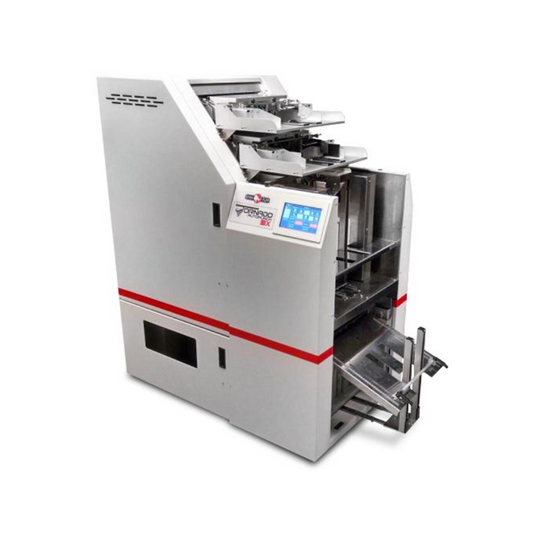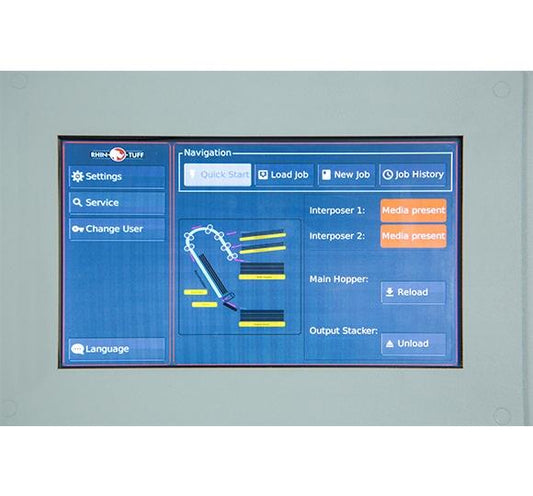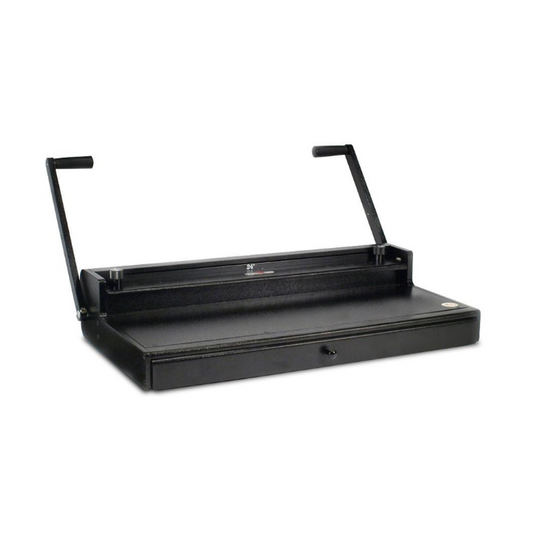Collection: Coil Binding
Coil binding is usually broken into three major categories; spiral binding, wire binding, and plastic comb. These types of mechanical binding are different from perfect binding or saddlestitching. Mechanical binding is a very popular method of binding books and offers a lot of unique advantages to the reader. Despite market trends and the rise of the e-reader, print manufacturers are still making lots of profit making books. Mechanical binding serves books that have a special purpose where the reader will benefit from the special lay-flat ability that this type of binding offers. Cookbooks, guides, and instruction manuals are perfect examples.
- Spiral Binding
- Comb Binding
- Wire-O
Spiral Binding, Wire Binding, and Plastic Comb
There are many manufacturers of mechanical binding equipment. Regardless of what type of binding there is always a need for a punching process. The punching process creates the holes in the right shape and pitch for the insertion process. The insertion process is different for spiral bound books and wire-o or comb. For spiral bound books the coil is spun into the book starting from one side. An operator usually starts it by hand and then presses it against a spinnig rubber roller to drive it across the book. For wire-o or comb the process involves holding open the wire or comb and then the book block is simply layed in before releasing the hold-open.
Many mechanical binding setups are combination machines that serve as a complete station. An operator can do then punching and coil insertion process all in one place. Other times these machines are seperate which can be nice for when tackling a job with multiple operators. It helps to have one person focus on punching and another person focus on coil insertion.
